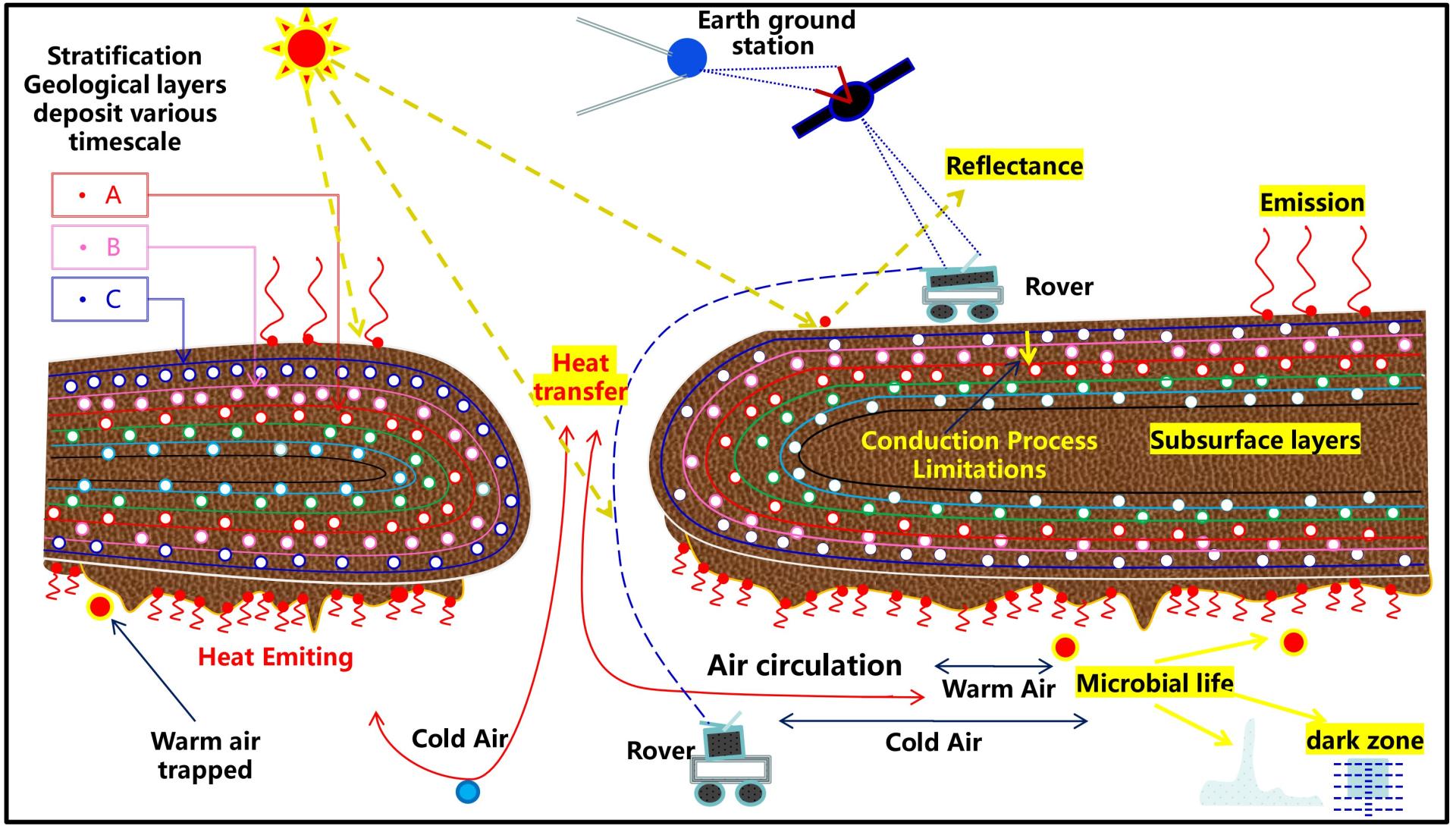On April 3rd, 2025, a research team led by Dr. Ding Chunyu from the Institute for Advanced Study(IAS) at Shenzhen University published groundbreaking findings in the internationally renowned journal: The Astronomical Journal. By integrating datasets from Mars Odyssey, Mars Global Surveyor (MGS), and the Mars Reconnaissance Orbiter (MRO) - including high-resolution imagery, thermal infrared observations, and mineralogical data - the team identified a potential subsurface lava tube skylight on the western flank of Mars' Elysium Mons. This discovery provides critical evidence for exploring Mars' subsurface habitability.
The paper, titled "Potential Subsurface Lava Tube Skylight on the Western Flank of Elysium Mons, Mars", lists the Institute for Advanced Study at Shenzhen University as the primary affiliation. Dr. Ravi Sharma served as the first author, with Dr. Ding Chunyu as the corresponding author.
·Multi-source Data Fusion: Uncovering Subsurface Lava Tubes on Mars
The research team utilized data from the Context Camera (CTX) and High-Resolution Imaging Science Experiment (HiRISE) aboard Mars Reconnaissance Orbiter (MRO), combined with thermal infrared imagery from Mars Odyssey's Thermal Emission Imaging System (THEMIS) and topographic data from Mars Global Surveyor (MGS), to conduct a comprehensive analysis of an elliptical pit crater (PCC) on the western flank of Elysium Mons on Mars. This pit crater, measuring approximately 386 meters in diameter and over 120 meters deep, exhibits distinctive characteristics including collapsed margins, persistently shadowed regions, and significant thermal anomalies at night - features that markedly differ from traditional impact craters. Through solar-satellite geometric modeling, the team confirmed that its morphology closely matches the "skylight" structure formed by the collapse of a subsurface lava tube roof.
Thermal infrared observations revealed that this skylight maintains temperatures about 20K higher than the surrounding terrain during Martian nights, indicating the presence of an insulating subsurface cavity beneath it. Mineralogical analysis further detected volcanic-related components such as olivine, pyroxene, and iron oxides, supporting the volcanic geological context for the lava tube's formation. Based on these findings, the research team proposed a new classification framework called "Potential Subsurface Lava Tube Skylight (PSLTS)", establishing novel criteria for identifying similar structures on Mars.
·Scientific Significance: Investigating Martian Subsurface Habitability and Resource Potential
Corresponding author Researcher Ding Chunyu stated: "This is the first discovery of a subsurface lava tube skylight in a Martian volcanic region that combines morphological, thermal behavior, and mineralogical evidence. Such structures may provide natural shelters for Martian microorganisms against radiation and extreme temperatures, while potentially storing critical resources like water ice, making them crucial for future in-situ resource utilization (ISRU)."
The study also revealed that the spatial distribution of this skylight aligns with partially collapsed pit chains in the surrounding area, suggesting it may belong to a larger underground lava tube network, making it an ideal target for robotic or crewed exploration missions.
The research was supported by the China Postdoctoral Science Foundation (No. 015247), the National Natural Science Foundation of China (Nos. 12473063, 62227901, 12461160265), the Shenzhen Science and Technology Innovation Committee (No. 20231121103211001), the Guangdong Natural Science Foundation (No. 2024A1515011275), and Shenzhen University's 2035 Pursuit of Excellence Research Program (No. 2024C009).
Link of paper: https://iopscience.iop.org/article/10.3847/1538-3881/adbe32

Fig. 1. Conceptual model of thermodynamic and geodynamic processes in Martian subsurface caves (Image credit: Research Team).


